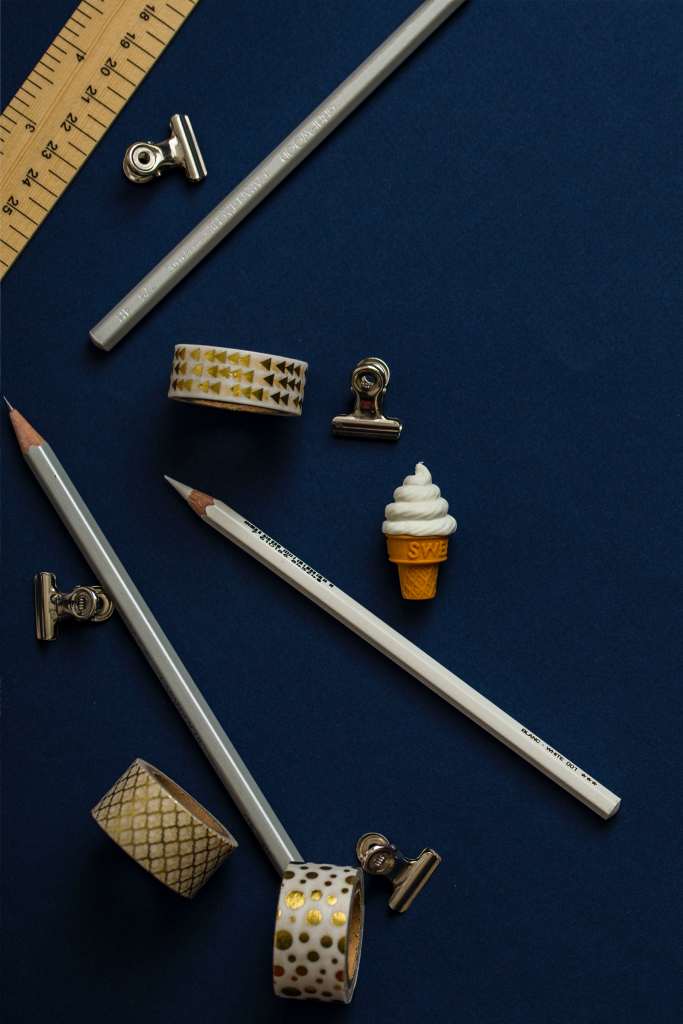Intro
Do you want to create a crystal-clear design brief that will help you get exactly what you need from your designer/design team? Sounds challenging but fear not! This guide is for you. I’ve put together some key tips that will give help you write an effective design brief and defeat the villain that is miscommunication.
Here’s how you can get your project’s goals met so everyone knows exactly what they’re supposed to be doing, besides nobody wants a riddler!
A brief encounter
Design briefs serve as the foundation of any project. A clear and concise document can help your team come together to achieve your goals. And while some people might think a design brief is just a list of bullet points, it’s so much more than that! It’s a representation of a problem you want Design to solve.
So what’s the point of having a design brief?
A design brief promotes better communication for all people involved and forms a structured plan for your project. By defining key details, you equip your designer to make better design decisions and keep the project moving. And as a bonus, your designer will not pester you with questions about any missing pieces of information (trust me, I know because I’ve been that pest before).

“I choose to run towards my problems and not away from them”
Thor
So let’s hammer down what a design brief is made up of and how to structure one, to collectively take the project from concept to completion without any hiccups or anything getting lost in translation.

1. Define the design goals
The best way to form a design brief is to give the designer as much info as possible. It’s important to be unambiguous, concise and detailed so you can get exactly what you want. The more information you give, the stronger the design will be.
It’s important your designer understands:
- your marketing strategy,
- your target audience,
- your business goals and objectives,
- your brand values and tone of voice,
- who else is involved in the process (if anyone)
- and any other relevant details.
This is not an exhaustive list of items that should be included in every design brief; rather it’s a starting point for those who are new to this process!
You should be able to describe the goals and objectives of your design straightforwardly, even to the most unseasoned designer. This means clarifying your project’s purpose, audience, and intended outcomes for everyone involved—including yourself.
To do this, clients/stakeholders need to ask themselves questions like:
- What are the objectives of this design?
- Who is my target audience?
- Why am I creating this thing?
- How will I measure success?
Here are some of the questions I like to ask:
- What are your goals for this project?
- What do you hope to accomplish with our help?
- What does success look like for you?
- How much time do you have set aside for this project?

2. Estimate the scope of work
To create a crystal clear design brief, you must first define the scope of work; this is the area of work that is covered by the brief. In other words, it’s what you as a client/stakeholder want from the designer at the finish line.
The scope should be defined in detail and agreed upon before starting a project. This ensures that everyone is on the same page about what it means for something to be done “well” or “poorly,” as well as how much time it should take to complete each task within your client’s requirements (which will also help prevent issues down the line).
Once you have defined your goals, use them as guidelines throughout the project. Pay special attention to any deliverables that do not directly align with any of your goals. If these deliverables are non-negotiable, consider how to fit them into the scope of work; if possible, include them in a separate phase of the project or dedicate resources towards them in a way that does not negatively impact project goals.
Failing to do this will cause ‘scope creep’ which happens when the initial deliverables exceed the prearranged scope. Early in my design career, this is something I’ve been guilty of, so when you spot it make sure you nip it in the bud. Not all scope creep is bad but know what tasks to let through the door because time spent on these additional tasks and deliverables is time away from your project’s actual objectives.

3. Assign responsibilities
Once you’ve identified the team members who will be involved in your project, it’s time to assign responsibilities. This step is crucial because it will clarify the roles of each person and help you decide who should be doing what.
A good design brief should include the following:
- A list of all the people involved in your project (even if they aren’t physically present at every meeting).
- Their respective roles (e.g., designer, developer, content creator).
- The deliverables they are responsible for producing or completing (e.g., wireframes, prototypes, copy).
This is where you have an opportunity to define and clarify expectations—and prevent any potential confusion down the road—by listing out what each person needs from another member of your team and vice versa.
For example:
“The content creator will provide the final copy and any relevant imagery.
The designer will provide high-fidelity wireframes that depict user flows and interactions.”
It is also useful as a project lead to have a contingency plan just in case of any unexpected circumstances (like someone being off sick). A good Plan B of who could pick up tasks in someone else’s absence or deliverables that can be scoped down.

“With great power comes great responsibility.”
Uncle Ben

4. Outline a style guide or brand guide
A style guide is a document that outlines the rules, standards, and guidelines of your brand. It’s not only helpful for designers and developers but also for marketing, sales, support and any other team members who may be interacting with customers.
A good style guide should include the following:
- The core values of the company
- Industry and sector specific insights
- The tone of voice you want to use (which might be different than how you talk in person)
- Descriptions of what makes up each brand element like logo design, typography usage, imagery style, colour palette etc.
Setting the tone will ensure a current of consistency runs throughout your project and prevent any assumptions. This will save you time on the current project and future projects as well. And you can reference how well this current project runs (having cultivated the use of a style guide and making it an instinct for all involved).

5. List any key deliverables and milestones
Once you have a list of deliverables, add a timeline. Everything runs on time. Unfortunately, there’s no glowing green infinity stone that can help us pause or rewind time!
A timeline will help your designer understand how long each phase of the project will take and how long it should be before you expect to see something back. If you’re not sure how much time to allot for each phase, discuss it with your team and set a realistic one. The important thing is that everyone knows what needs to get done and when.
You may want to include milestones in your design brief as well (e.g. mood board, storyboard, final script, and approval from stakeholders).
A clear brief helps you establish what you want and how you will get there
A Design Brief is an important part of the design process. It helps you establish what you want and how you will get there. A good design brief helps you define the scope of work, assign responsibilities, and set expectations.
A well-written design brief answers all these questions:
- What am I asking for?
- Why do I need it?
- Who is responsible for what?

“Faith is my sword. Truth is my shield.
Knowledge my armour.”
Dr. Strange
Here are some tips for how to write a clear design brief:
- A mine of information:
Make sure you have all the information you need about your product or service. If you don’t know how many pages will be needed, or what kind of photos or graphics will be needed, you can’t expect the designer to know either! - Keep it simple:
Don’t use jargon or technical terms that might not make sense to someone who isn’t familiar with your industry. The clearer you can explain what you need, the higher chance there is that they’ll understand it and provide something useful! - Be specific!
Designers love details because they help them do their jobs better—so if there’s anything explicit about what you want (like certain colours or fonts), make sure to include those details in your brief so your designer can begin and doesn’t have any immediate (and obvious) questions (not that that’s a problem, but it will save time).
Conclusion
A well-defined design brief is the cornerstone of any successful project. It helps everyone involved to understand what needs to be accomplished, how it will be done, and when they can expect the results. A clear brief can also help you make better decisions throughout the process by highlighting key issues as they arise – so don’t hesitate to ask for clarification if something doesn’t seem clear!
Communication is everything. The biggest injustice you can do to your project is not speaking and sharing thoughts and ideas with each other. Failing to do so can be costly and use up time, delaying key parts of the project or making you miss a deadline.
Designers are smart people, and they know what they’re doing. But sometimes it can be hard to follow the logic of a design brief. If you really want to impress your designer, make sure your brief is clear. Don’t be afraid to ask questions about things you don’t understand and don’t assume that because you understand something, the designer does too—they don’t!

“The real crime would be not to finish what we started.”
Dr. Octopus
1
Define the goals
2
Decide on workload
3
Pick the people
4
Style & Brand guidance
5
Tasks & timelines

